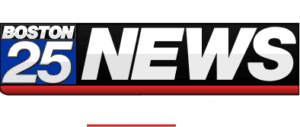Imaging
A new satellite could help scientists unravel some of Earth’s mysteries. Here’s how
WATCH: New England-based researchers share rare video from ocean’s ‘Twilight Zone’
Sea Ahead
The game-changing technologies that will transform our ability to understand and manage Earth’s last great frontier. Monitoring instruments—and ocean technologies in general—have come a long way. We now have Artificial Intelligence (AI)-enabled robots that not only allow researchers to access the most remote spots in the ocean, but can decide where to explore once they get there.
Decoding The Black Box: The 2015 US Disaster That Revolutionized Ship Crash Investigations
The first challenge for the El Faro was to locate and extract the VDR. It took three expeditions over 11 months and the use of novel video telepresence, to be able to go down, retrieve it. The NTSB and Woods Hole Oceanographic Institution also highlight the lengths they went to here.
‘SharkCam’ films basking sharks off Scotland
A robot camera has been used in UK seas for the first time to monitor the behaviour of basking sharks. WHOI’s SharkCam was deployed off the west coast of Scotland where the sharks gather to breed after migrating from waters off west Africa.
Scientists returning to site of 1898 shipwreck off Mass. waters that killed more than 190 people
Scientists on Tuesday will once again explore wreckage from the steamship Portland, which sank in 1898 in waters off Massachusetts, killing more than 190 people in what became known as the “Titanic of New England.” Via Twitter, the Woods Hole Oceanographic Institution provided details on the planned expedition.
Penguins Are Nature’s Best Snugglers
It turns out that penguins execute their huddles with a high degree of mathematical efficiency, as Blanchette and his team discovered. More recently, Daniel Zitterbart, a physicist at Woods Hole Oceanographic Institution in Massachusetts, helped develop and install high-resolution cameras to observe undisturbed huddling behavior.
Best of Constant Wonder
WHOI Research Engineer Jeff Kaeli talks about the 2017discovery of the San José, a sunken ship from 1708 loaded with treasure valued up to $17 billion. (segment begins 24:05)
Scientists Team With Fishermen on Tracking Technology
Scientists from the Center for Coastal Studies and the Woods Hole Oceanographic Institution are working with local commercial fishermen to install video monitoring equipment on gillnets.
Infrared Cameras Could Help Ships Avoid Whales
An interview with Dan Zitterbart, a WHOI scientist who is testing a new thermal infrared imaging system to detection whales in busy waterways to prevent ship strikes.
On the Trail of Sea Life with an Autonomous Underwater Vehicle
quotes Amy Kukulya, Kara Dodge
Visit to Biggest Underwater Volcano in Last 100 Years Reveals Deep Sea Mystery
quotes Adam Soule
Sound and Color
features Mark Baumgartner and Daniel Zitterbart
Re-envisioning Underwater Imaging with Revolutionary New System
ran the WHOI news release on the Advanced Imaging and Visualization Lab. Quotes Bill Lange and Tim Shank
Oceanographers’ New Research Tools: Virtual Reality and 3D Printing
Quotes Jake Gebbie and mentions Ben Greenwood. Written by a 2016 WHOI Ocean Science Journalism Fellow.
Swarms of pumpkin-like robots could explore and map the oceans
quotes Yogesh Girdhar and mentions WHOI





